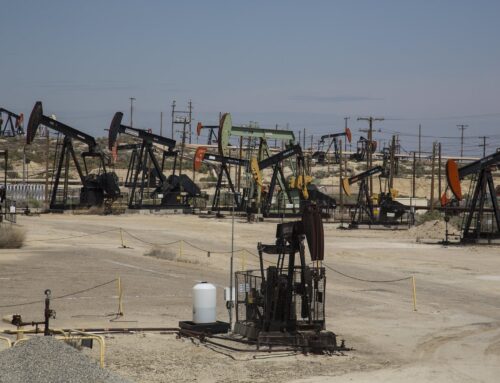The Energy and Mineral Resources Subcommittee of the House Natural Resources Committee held a hearing on April 15 to consider the Orphaned Well Cleanup and Jobs Act of 2021 (H.R. 2415). The measure introduced by Representative Teresa Leger Fernández (D-NM) would authorize $7.25 billion in grants for orphaned well cleanup on state and private lands and $700 million for cleanup on federal and tribal lands.
Orphaned wells are oil and gas wells whose operators have abandoned them and shed responsibility for their cleanup, through bankruptcy or otherwise. [Read our new issue brief for more background information] Orphaned wells can pose serious safety, health and environmental threats if not properly cleaned up, or “remediated.” The uncertain number of orphaned wells and cost of associated liabilities, insufficient bonding that enables well abandonment, and the lack of accountability imposed on the oil and gas industry are some big questions for lawmakers to consider. Committing to a multibillion-dollar project before answering them risks wasting taxpayer dollars.
At the hearing, the subcommittee heard from several witnesses about the problem of orphaned wells and Rep. Leger Fernández’s bill to address it. The witnesses included Dr. Mary Kang, an assistant professor at McGill University who recently published a paper on the underestimated methane emission from orphaned wells and its environmental impact. Dr. Kang testified that the exact number of orphaned wells is unknown to researchers and regulators, and estimates vary drastically depending on the definition of ‘abandoned’ and ‘orphaned.’
The amount in bonds companies need to post to guarantee well cleanup before they can start drilling have not been updated in decades, so the coverage the bonds provide has decreased dramatically due to inflation. Reports by the Government Accountability Office (GAO) have consistently found that the current minimum bond amounts are insufficient to ensure companies clean up wells sites when they are done pumping oil and gas. Yet during the hearing, the Ranking Member, Pete Stauber (R-MN), claimed that the bill would be “nickel and diming” the oil and gas industry because it proposes an increase to bonding rates as well as a new fee on idle wells.
During her question time, Rep. Yvette Herrel (R-NM) argued that increased bonding rates would hurt small producers. To the contrary, the current low minimums for blanket bonds for all leases in a state or across the country benefit bigger oil and gas companies. For example, a company with 100 wells in a state can acquire a bond with statewide coverage at the same cost (or 1/10 of the cost per well) as a company with 10 wells in a state, even though the former potentially has 10 times more reclamation liabilities. Rep. Bruce Westerman (R-AR) said that the bill has the potential for bipartisan support but also raised concerns with the increased bonding rates and an idle well fee.
By authorizing the Bureau of Land Management (BLM) to collect a fee on idle wells, the bill would implement one recommendation of the GAO to fund orphaned well reclamation. Increasing bond minimums would also likely reduce the number of wells orphaned in the future, but more is needed to ensure bonds accepted by BLM correspond to total reclamation costs. Some of the spending would be offset by collections of the new fee, but $400 million could grossly exceed revenues and the total need for reclamation on federal land.










